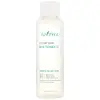What's inside
What's inside
 Key Ingredients
Key Ingredients

 Benefits
Benefits

 Concerns
Concerns

 Ingredients Side-by-side
Ingredients Side-by-side

Water
Skin ConditioningGlycerin
HumectantButylene Glycol
HumectantBetaine Salicylate
AntimicrobialHizikia Fusiforme Extract
Skin ConditioningCodium Fragile Extract
Skin ConditioningEcklonia Cava Extract
Skin ConditioningGelidium Cartilagineum Extract
Skin ProtectingSalix Alba Bark Extract
AstringentCentella Asiatica Extract
CleansingPortulaca Oleracea Extract
Skin ConditioningSodium Hyaluronate
HumectantSoy Isoflavones
Skin ConditioningChamomilla Recutita Flower Extract
MaskingGlycyrrhiza Glabra Root Extract
BleachingAloe Barbadensis Leaf Juice Powder
Skin ConditioningAllantoin
Skin ConditioningDipotassium Glycyrrhizate
HumectantPanthenol
Skin ConditioningSodium Hydroxide
BufferingXanthan Gum
EmulsifyingWater, Glycerin, Butylene Glycol, Betaine Salicylate, Hizikia Fusiforme Extract, Codium Fragile Extract, Ecklonia Cava Extract, Gelidium Cartilagineum Extract, Salix Alba Bark Extract, Centella Asiatica Extract, Portulaca Oleracea Extract, Sodium Hyaluronate, Soy Isoflavones, Chamomilla Recutita Flower Extract, Glycyrrhiza Glabra Root Extract, Aloe Barbadensis Leaf Juice Powder, Allantoin, Dipotassium Glycyrrhizate, Panthenol, Sodium Hydroxide, Xanthan Gum
Water
Skin ConditioningGlycolic Acid
BufferingButylene Glycol
HumectantHamamelis Virginiana Water
AstringentPoloxamer 184
EmulsifyingDipropylene Glycol
HumectantPEG-40 Hydrogenated Castor Oil
EmulsifyingBenzyl Alcohol
PerfumingSodium Hydroxide
BufferingAlcohol
AntimicrobialSodium Cocoamphoacetate
CleansingDisodium Cocoamphodiacetate
CleansingUrea
BufferingSodium Chloride
MaskingParfum
MaskingDehydroacetic Acid
PreservativeDisodium EDTA
Glycerin
HumectantPanax Ginseng Root Extract
EmollientAloe Barbadensis Leaf Juice
Skin ConditioningLinalool
PerfumingLimonene
PerfumingHexyl Cinnamal
PerfumingSodium Benzoate
MaskingButylphenyl Methylpropional
PerfumingPotassium Sorbate
PreservativeCI 15985
Cosmetic ColorantWater, Glycolic Acid, Butylene Glycol, Hamamelis Virginiana Water, Poloxamer 184, Dipropylene Glycol, PEG-40 Hydrogenated Castor Oil, Benzyl Alcohol, Sodium Hydroxide, Alcohol, Sodium Cocoamphoacetate, Disodium Cocoamphodiacetate, Urea, Sodium Chloride, Parfum, Dehydroacetic Acid, Disodium EDTA, Glycerin, Panax Ginseng Root Extract, Aloe Barbadensis Leaf Juice, Linalool, Limonene, Hexyl Cinnamal, Sodium Benzoate, Butylphenyl Methylpropional, Potassium Sorbate, CI 15985
 Reviews
Reviews

Ingredients Explained
These ingredients are found in both products.
Ingredients higher up in an ingredient list are typically present in a larger amount.
Butylene Glycol (or BG) is used within cosmetic products for a few different reasons:
Overall, Butylene Glycol is a safe and well-rounded ingredient that works well with other ingredients.
Though this ingredient works well with most skin types, some people with sensitive skin may experience a reaction such as allergic rashes, closed comedones, or itchiness.
Learn more about Butylene GlycolGlycerin is already naturally found in your skin. It helps moisturize and protect your skin.
A study from 2016 found glycerin to be more effective as a humectant than AHAs and hyaluronic acid.
As a humectant, it helps the skin stay hydrated by pulling moisture to your skin. The low molecular weight of glycerin allows it to pull moisture into the deeper layers of your skin.
Hydrated skin improves your skin barrier; Your skin barrier helps protect against irritants and bacteria.
Glycerin has also been found to have antimicrobial and antiviral properties. Due to these properties, glycerin is often used in wound and burn treatments.
In cosmetics, glycerin is usually derived from plants such as soybean or palm. However, it can also be sourced from animals, such as tallow or animal fat.
This ingredient is organic, colorless, odorless, and non-toxic.
Glycerin is the name for this ingredient in American English. British English uses Glycerol/Glycerine.
Learn more about GlycerinSodium Hydroxide is also known as lye or caustic soda. It is used to adjust the pH of products; many ingredients require a specific pH to be effective.
In small amounts, sodium hydroxide is considered safe to use. However, large amounts may cause chemical burns due to its high alkaline.
Your skin has a natural pH and acid mantle. This acid mantle helps prevent harmful bacteria from breaking through. The acid mantle also helps keep your skin hydrated.
"Alkaline" refers to a high pH level. A low pH level would be considered acidic.
Learn more about Sodium HydroxideWater. It's the most common cosmetic ingredient of all. You'll usually see it at the top of ingredient lists, meaning that it makes up the largest part of the product.
So why is it so popular? Water most often acts as a solvent - this means that it helps dissolve other ingredients into the formulation.
You'll also recognize water as that liquid we all need to stay alive. If you see this, drink a glass of water. Stay hydrated!
Learn more about Water